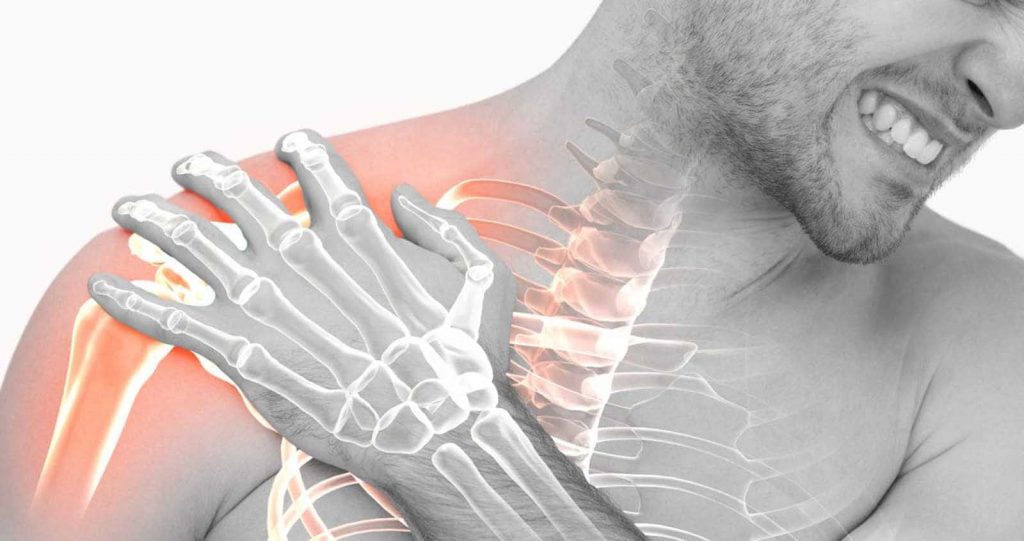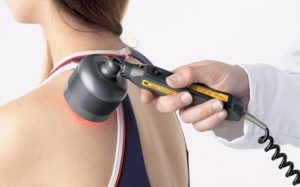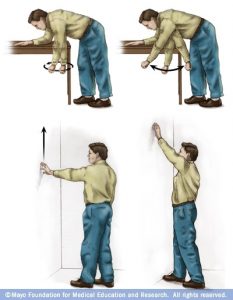Alternative Effective Treatment on Frozen Shoulder – LASER THERAPY

It commonly affects people aged between 40 and 60 years, and it is more likely in women than in men. It is estimated to affect about 3% of people. It can affect one or both shoulders.

Symptoms
Symptoms of frozen shoulder include persistent pain in the upper shoulder joint. A person with a frozen shoulder will have a persistently painful and stiff shoulder joint. Pain on shoulder become gradually worsen over time. Frozen shoulder is a common condition in which the shoulder stiffens, reducing its mobility.
Causes
Frozen shoulder is thought to happen when scar tissue forms in the shoulder. Connective tissue, known as the shoulder capsule, surrounds the shoulder joint. Synovial fluid enables the joint to move without friction. This causes the shoulder joint’s capsule to thicken and tighten, leaving less room for movement. The movement may become stiff and painful.
Risk factors
Common risk factors for frozen shoulder are:
- Age:Being over 40 years.
- Gender:70 percent are women.
- Recent trauma:Surgery or arm fracture can lead to immobility during recovery, and this may cause the shoulder capsule to stiffen.
- Degenerative disease of cervical spine: cervical spondylosis, disc prolapsed, cervical ribs. (leads weakening shoulder muscle to move).
- Diabetes: 10 – 20% people with diabetes develop frozen shoulder, and symptoms may be more severe.
Stages
Symptoms are usually classified in three stages, as they worsen gradually and then resolve within a 2- to 3-year period.
1. Freezing, or painful stage: Pain increases gradually, making shoulder motion harder and harder. Pain tends to be worse at night. This stage can last from 6 weeks to 9 months.
2. Frozen: Pain does not worsen, and it may decrease at this stage. The shoulder remains stiff. It can last from 4 to 6 months, and movement may be restricted.
3. Thawing: Movement gets easier and may eventually return to normal. This takes between 6 months and 2 years.
Over 90% of people find that with simple exercises and pain control, symptoms improve frozen shoulder.
Diagnosis
Doctors will most likely diagnose frozen shoulder based on signs, symptoms, and a physical exam, paying close attention to the arms and shoulders. The severity of frozen shoulder is determined by a basic test in which a doctor presses and moves certain parts of the arm and shoulder. Structural problems can only be identified with the help of imaging tests, such as an X-ray or Magnetic Resonance Imaging (MRI).
Treatment
The aim is to reduce pain and preserve mobility and flexibility in the shoulder. In time and with treatment, 9 out of 10 patients experience relief. However, recovery may be slow, and symptoms can persist for several years. There are several ways to relieve pain and normalize the function.
Painkillers
NSAIDs, can reduce inflammation and pain but temporary only. Long time painkiller may damage kidney.
Hot or cold compression and Massage: These can help reduce pain and swelling.
Corticosteroid injections: A type of steroid hormone that reduces pain and swelling, these may be injected into the shoulder joint to alleviate pain. However, repeated corticosteroid injections are discouraged as they can have adverse effects, including further damage to the shoulder.
Transcutaneous electrical nerve stimulation (TENS): This works by numbing the nerve endings in the spinal cord that control pain.
Laser Therapy (LLLR)

Biological effects of LLLT on tissue: Proliferation, Differentiation, Migration, Immunological activation, inhibition of inflammation, angio-neogenesis, cell signalling, photobiostimulation, increasing ATP, Micro-circulation, endorphine.
Clinical Benefits of LLLT: Normal tissue regeneration, Reduces scarring, rapid recovery of tissue, resolves infections, anti- inflammatory action, reduces pain and swelling, improves range of motion, functional recovery, restores normal vasculature, resolves chronic scars and adthesion , healing all cells and tissues.
Physical therapy: This can provide training in exercises to maintain as much mobility and flexibility as possible without straining the shoulder or causing too much pain.
Shoulder manipulation: The shoulder joint is gently moved while the patient is under a general anesthetic.
Shoulder arthroscopy: A minimally invasive type of surgery into the shoulder joint to remove any scar tissue or adhesions.
The doctor will suggest a suitable option depending on the severity of signs and symptoms.
Prevention
Frozen shoulder can only be prevented if it is caused by an injury that makes shoulder movement difficult. Anyone who experiences such an injury should talk to a doctor about exercises for maintaining mobility and flexibility of the shoulder joint.
Exercises

Frequent, gentle exercise can prevent and possibly reverse stiffness in the shoulder.
